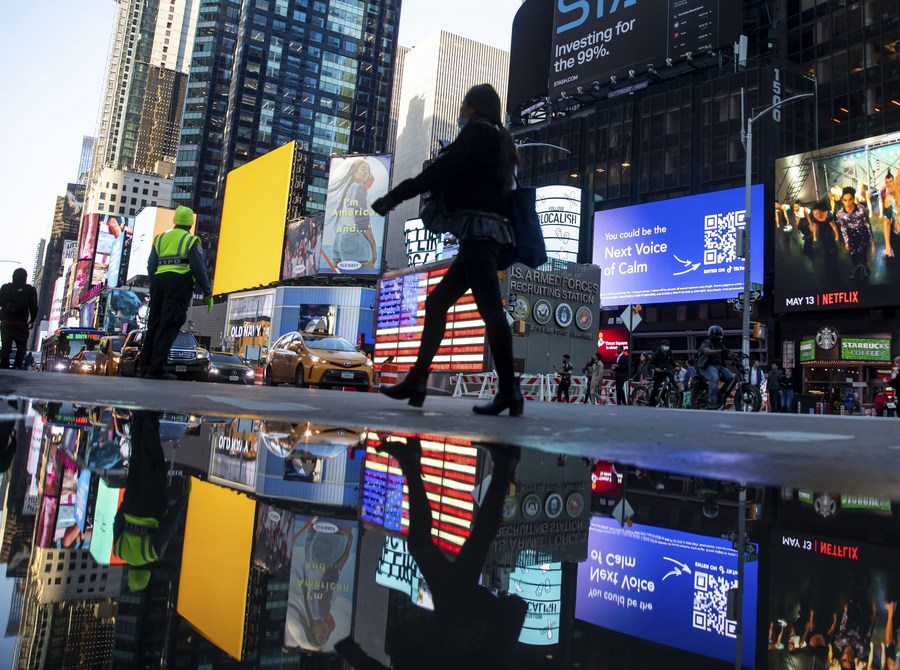Color-based social distance creates understanding gaps between Americans

Pedestrians walk on a street in New York, the United States, on May 12, 2022. (Photo by Michael Nagle/Xinhua)
NEW YORK, Oct. 27 (Xinhua) -- Color-based social distance has become a challenge for Americans to understand each other as darker skin color conjures in non-minority Americans' mind images of inferiority, criminality, and immorality, said a column on a U.S. weekly newspaper.
The racist signs are collectible relics in the United States but the attitudes that created the signs are very much alive, said the column titled "The impact of social distance" at the website of the Wednesday Journal of Oak Park and River Forest.
Skin color "in America is equivalent to the Star of David patches that the Nazis forced Jewish people to wear. Skin color is a shortcut to thinking for too many people. Darker skin color conjures in their mind images of inferiority, criminality, and immorality," it said.
"Lack of social interaction leads to increased distance between minorities and non-minorities. As a result of socially encouraged social distance, knowledge of a minority person's day-to-day life experiences is scant or non-existent," it continued.
"Slights, verbal assaults, micro-aggressions, and physical attacks are realities a minority person must deal with daily. And, if the minority person reacts, resists, or complains about being unfairly treated s/he is viewed as the agitator," the column said.
Photos
Related Stories
- Half of American workers considering second jobs amid high inflation: poll
- U.S. government not focusing on issues important to most people: poll
- U.S. school shootings already at record level in 2022: criminologists
- Racial, ethnic disparities persist in U.S. outpatient COVID-19 treatment: CDC
- U.S. GDP up 2.6 percent in third quarter, but recession fears loom
- Cancer death rates continue to fall in U.S.: report
Copyright © 2022 People's Daily Online. All Rights Reserved.









